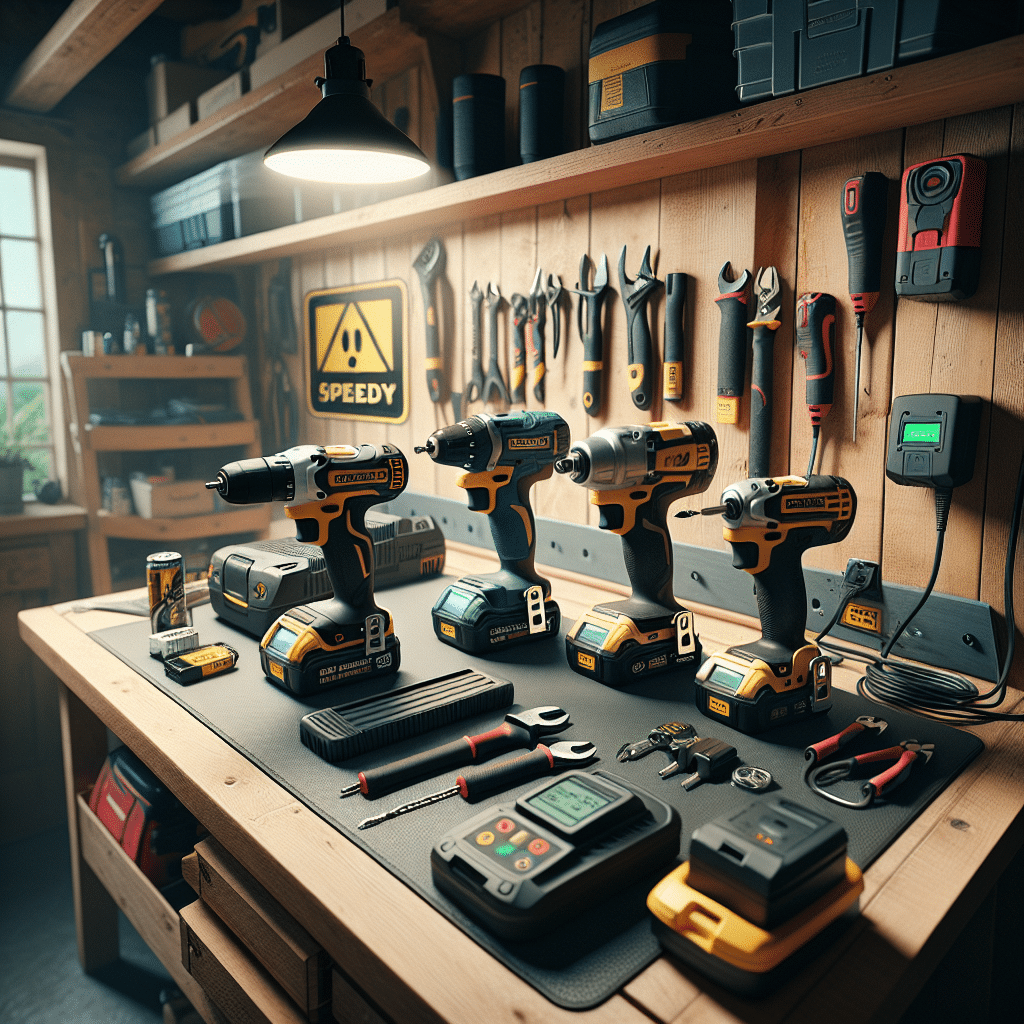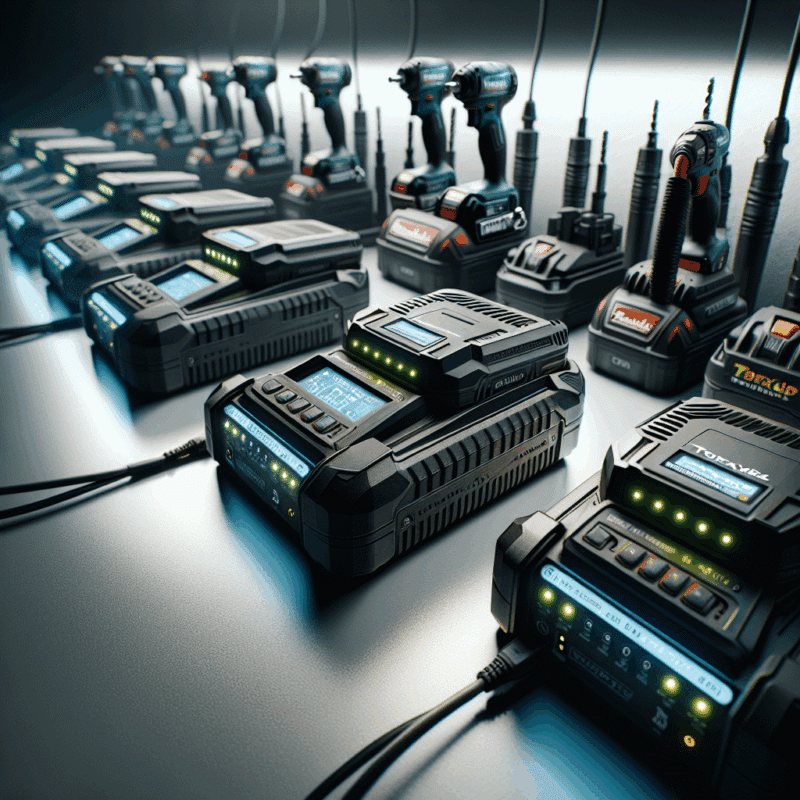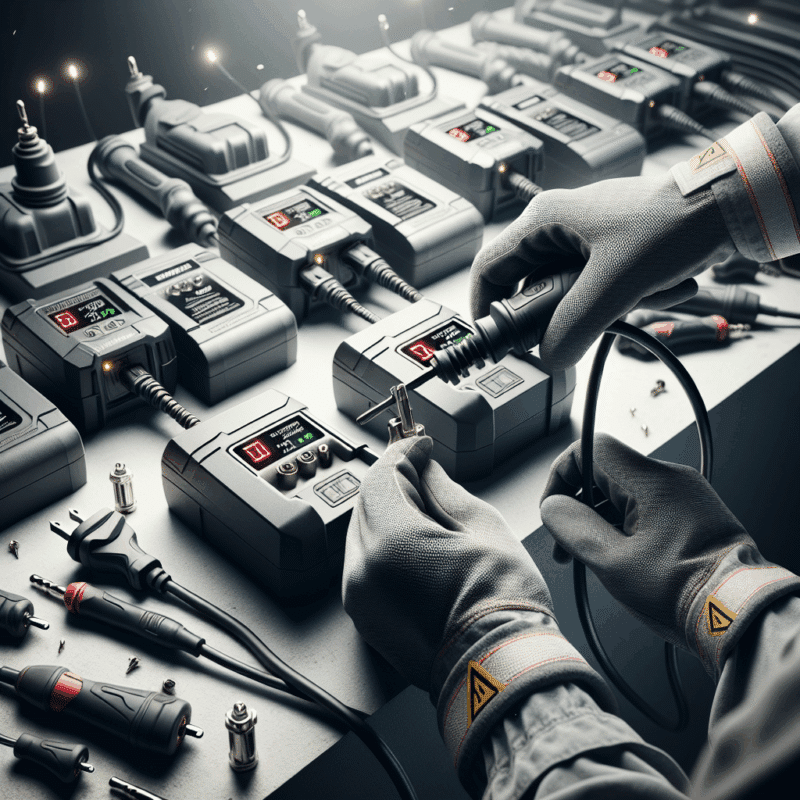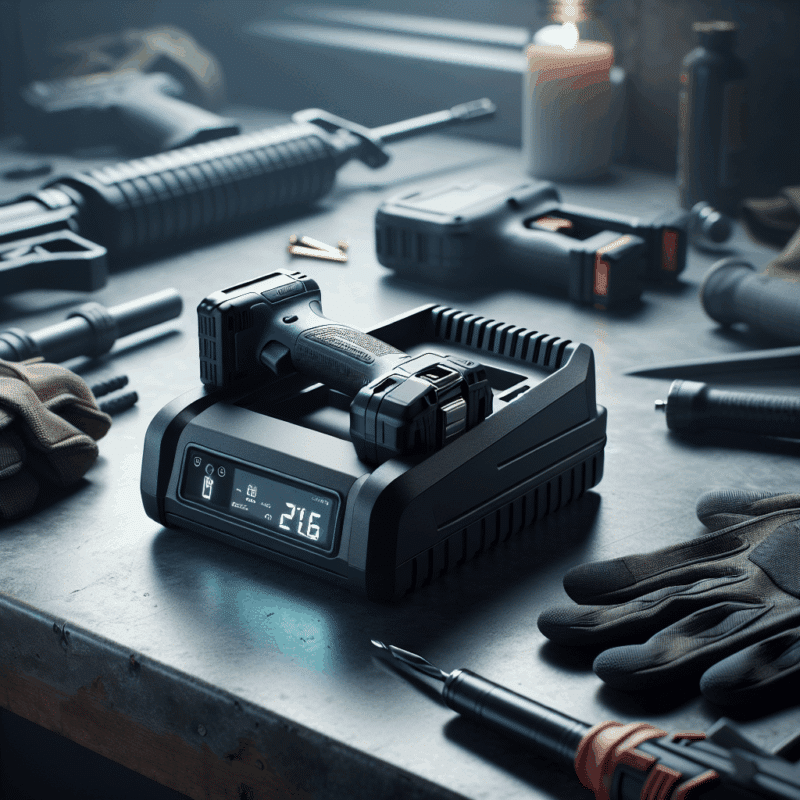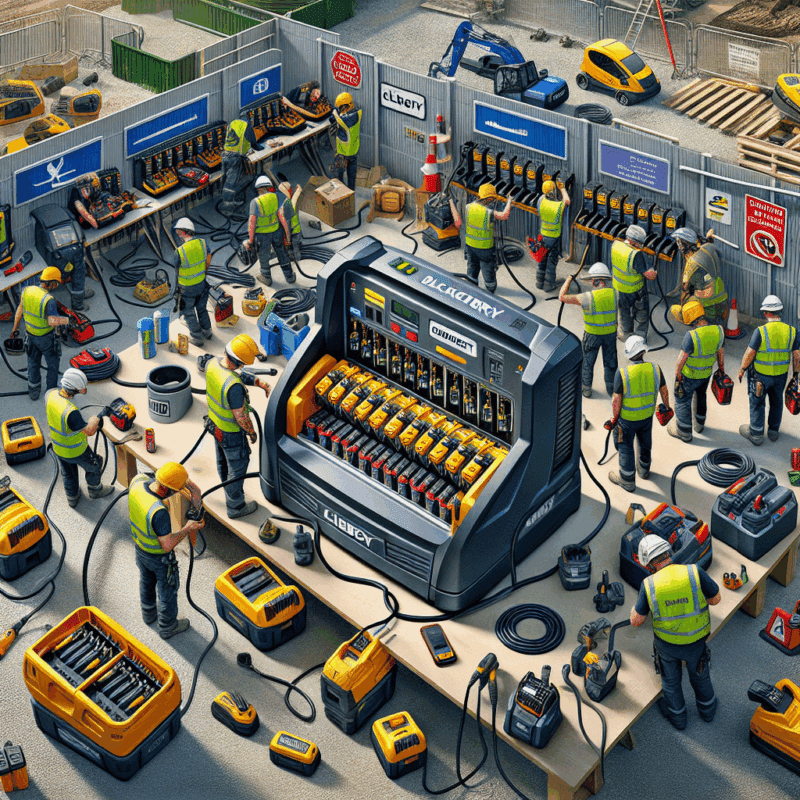Are Third-Party Makita Chargers Worth It? Pros, Cons & Insights
In This Article
- Third-party Makita chargers offer significant savings without always compromising on quality
- Look for certifications and proven user reviews for safety assurance
- Compatibility with your exact battery model is essential for performance
- Avoid cheap, untested chargers that lack regulatory approvals
- Premium third-party brands can rival OEM versions in speed and consistency
Why Consider a Third-Party Makita Charger?
Cost Savings Driving Demand
A third-party Makita charger offers a tempting alternative to those seeking high performance without the OEM price tag. Many users are reconsidering their spending, especially when outfitting multiple tools or replacement units. Unlike official Makita chargers, aftermarket models often retail at a fraction of the cost, sometimes offering up to 60% savings. Naturally, cost-conscious professionals and home DIYers are drawn to these alternatives.
The lower price point lacks direct correlation with quality in some instances. Reputable brands have emerged in the third-party market that provide comparable performance while maintaining rigorous safety standards. When individuals find themselves with multiple Makita-compatible batteries but a single charger, seeking a third-party option becomes more than a convenience—it becomes a necessity. This growing demand has led to a boom in variety, allowing buyers to select features, designs, and specifications to suit their precise requirements. Still, despite the benefits, assessing quality remains essential before purchase.
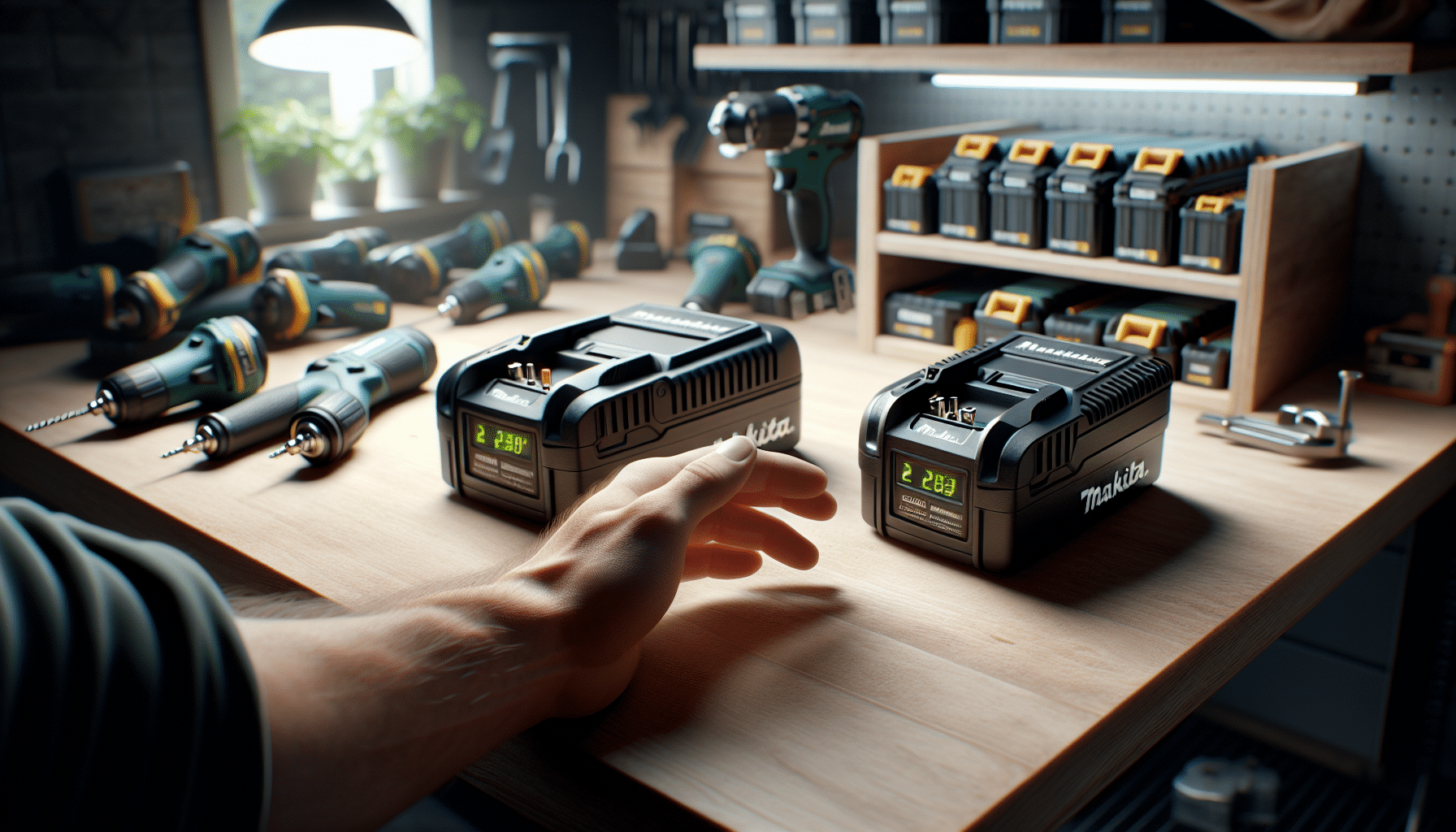
Key Benefits of Aftermarket Charger Options
Speed, Availability & Compatibility
Aftermarket chargers often mimic or improve upon the functionality of OEM chargers. For example, many high-quality third-party Makita chargers offer rapid charging times, sometimes outperforming their original counterparts. A major advantage is the ready availability of these chargers—both online and in-store. This accessibility makes replacements and spares easy to acquire in a time-efficient manner.
Compatibility is another strength. Many chargers are engineered to support an array of Makita lithium-ion battery voltages and profiles. Some models are even dual-voltage or multi-platform, capable of charging different brands. Additionally, bulk purchasers enjoy features like dual-bay stations, wall mounting plates, and USB-out ports—elements less common in OEM versions. All this adds to the convenience and value proposition of third-party units.
“I was skeptical at first, but my third-party charger cut downtime in my workshop in half. It’s been a game-changer.” — Peter H., joiner, Norwich
Risks and Warnings When Choosing Non-OEM Chargers
Compatibility Errors & Heat Issues
While there are numerous advantages, choosing a third-party Makita charger also introduces potential hazards. Incompatible models can fail to charge a battery, deliver inconsistent voltage, or trigger warning lights on Makita battery packs. Faulty charging processes can gradually degrade battery life or outright damage your tools.
One of the most significant concerns is overheating. Budget-priced or counterfeit units may lack thermal regulation, occasionally causing chargers to become dangerously hot. Poor-quality components and inadequate circuit protection result in malfunctions, or worse, safety incidents. Overheating doesn’t only pose a risk to the charger but can compromise battery casing integrity—potentially leading to combustion. Therefore, always research before purchasing and ensure your unit has safeguards like over-voltage shutdown, charge timers, and automatic fan cooling systems.
Comparing Performance: OEM vs Third-Party Chargers
Real-World Test Results From Workshops
Numerous independent tests have compared OEM Makita chargers to prominent third-party options using various tools and battery sizes. One such study, executed by a UK-based tiling firm, tested six brands under timed charging conditions and thermal mapping. Results indicated that while OEM models maintained the most consistent charge curve, several aftermarket units came close in performance, with only minor differences in total charge time—a variance of around 10%.
Performance under high-demand circumstances revealed that aftermarket models from reputable companies handled charging large AH packs effectively (up to 5.0Ah). However, some unbranded chargers failed outright or took significantly longer to charge the same batteries. Proper voltage matching and recognising the brand’s testing practices are vital. Beware of any charger that cuts off early or continues charging past 100% capacity, which can shorten battery lifespan dramatically.
Safety Certification to Look For in Third-Party Units
Overcharge Protection & CE Marking
One crucial factor when choosing a third-party Makita charger is certification. Consumers should prioritise models that have passed CE compliance, RoHS directives, and comply with UKCA markings. These standards confirm that the product meets electrical safety benchmarks required across the UK and EU.
A reputable third-party charger will include overcharge protection, short-circuit safeguards, and even surge protection—features designed to prevent damage not only to the battery but to nearby devices and surfaces. Smart LED indicators are an additional safety measure, providing clear status cues. For maximum assurance, look for brands that are ISO certified in their manufacturing process. Never purchase units on unfamiliar platforms if they lack detailed documentation or proof of compliance.
How to Know if It’s Compatible With Your Tools
Connector Type and Voltage Ratings
Ensuring compatibility begins at the connector. Makita’s batteries use a signature slide-on rail with integrated communication terminals. Third-party manufacturers must replicate this accurately to avoid data transfer errors or false fault readings. While most third-party Makita chargers list compatible battery codes, it’s good practice to double-check model numbers against your battery.
Voltage is critical. Makita produces batteries in 10.8V, 14.4V, 18V and 40V Max ranges. Your chosen charger must clearly specify which voltages it supports. Using an 18V-only charger for a 40V Max pack not only fails to charge the battery but risks electrical shorting. Dual or universal charging models offer flexibility across different voltages but always confirm they list your exact battery series. When in doubt, consult your owner’s manual or reach out to the manufacturer.
Signs of Low-Quality or Counterfeit Chargers
What to Watch During Unboxing
Unboxing offers your first chance to evaluate a charger’s legitimacy. Start with packaging—low-quality chargers arrive in flimsy boxes without proper branding or documentation. Check the model number sticker: if unclear or missing, that’s a major red flag. Look at the adhesion of the casing—gaps or misaligned plastic joins indicate poor manufacturing.
Screeching internal fan noises or loose terminal fittings are further signs of inferiority. If a charger lacks LED indicators or they behave erratically upon first use, consider discontinuing use immediately. An authentic third-party Makita charger will include an instruction sheet, warranty terms, and neatly machined contact plates. Don’t risk your tools or safety—when uncertain, it’s better to return the item through a certified outlet. Learn more about Makita Battery & Charger Solutions
Top Rated Third-Party Makita Charger Brands in 2024
User Feedback & Product Analysis
According to verified user reviews and tool-focused publications, a handful of third-party Makita charger brands lead the market in 2024. Notable mentions include POWERGIANT, Keenstone and TechMax—all appreciated for reliable voltage regulation, CE certifications and rapid charging speeds. POWERGIANT has received praise for its ability to maintain battery temperature below 50°C even during back-to-back charges.
Reddit’s r/ToolsUK forum frequently highlights TechMax’s dual-bay charger for its multi-LED indicators and overcurrent protection features. Additionally, Keenstone remains popular due to its ability to handle both Makita and Milwaukee batteries using an intelligent switching interface. For full rankings and detailed spec comparisons, consult the Real-world experiences with Makita alternatives.
Community Insights: Do Pros Trust Aftermarket Models?
Reddit & Forum Highlights
Professional tradespeople offer diverse perspectives when it comes to using a third-party Makita charger. In Reddit’s r/CarpentryUK and r/Electricians forums, many users express confidence in premium third-party chargers, especially for workshop or stationary settings. One user mentioned running three Keenstone chargers simultaneously without issue, powering 15 tools on a domestic electrical circuit safely.
Nonetheless, several plasterers and roofers expressed hesitation. For tasks that require long-day site use, many still prefer OEM models due to their rugged build quality and weather resistance. Others note that incompatibility with advanced Makita batteries featuring chip-to-charger data sync systems can still cause issues. Forums reinforce that brand reputation, verified reviews, and warranty support are core elements contributing to user confidence. Read a related article
Suggested Buying Checklist for Safe Performance
What to Review Before You Buy
Before buying a third-party Makita charger, use this practical checklist to avoid inferior products:
- Ensure CE/UKCA/ROHS compliance indicators and documentation are included
- Match the charger’s supported voltage to your exact battery series
- Check for intelligent features like auto shut-off, thermal control, and LED diagnostics
- Read third-party reviews, preferably from UK-based professionals
- Inspect seller reputation and return policies—avoid unknown websites or dropshippers
- Opt for brands offering at least a 12-month warranty period
- Watch unboxing videos to preview appearance and function before purchase
- Evaluate noise output for compatibility in quiet job site environments
- Compare prices across at least three retailers to spot fakes and duplicates
- Bookmark relevant safety guides from reputable sources like How AI can optimise product research
Final Thought — Are They Worth It?
So, after weighing the evidence, is a third-party Makita charger truly worth buying? If selected wisely, the answer is a confident yes. These chargers represent a viable alternative with meaningful cost benefits, speed advantages and broad compatibility. They serve especially well in domestic, light-industrial, or supplementary-use scenarios. However, discernment is key. Avoid cut-rate models with no testing history or regulatory certification.
Stick to recognised third-party brands, seek genuine warranties, and always match your charger to tool specifications. When these best practices are followed, a third-party Makita charger can complement or even outperform some OEM options—at a price that protects your bottom line and keeps your toolkit running efficiently.
Great guide on are-third-party-makita-chargers-worth-it-successes-and-shortfalls-interactive – Community Feedback
What are the benefits and drawbacks of third-party Makita chargers?
Third-party Makita chargers are often more affordable and may offer faster charging. However, quality varies greatly, and some lack proper safety features, impacting battery lifespan and tool warranties. Always verify compatibility and look for protection certifications before choosing a non-OEM charger.
Can using a third-party charger damage my Makita batteries or tools?
Using a poor quality third-party charger with insufficient protection circuits may cause battery overheating, reduced lifespan, or even damage to your tools. Choose reputable brands with built-in safety features and check customer reviews to minimise risks.
How can I verify if a third-party charger is compatible with my Makita tools?
Check the charger’s voltage, current ratings, and plug type against your battery and original charger requirements. Look for clear compatibility statements from the brand and seek third-party test results or customer feedback to ensure reliable operation.

